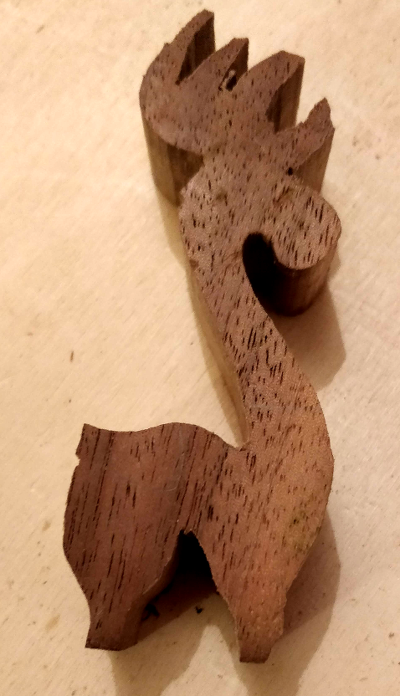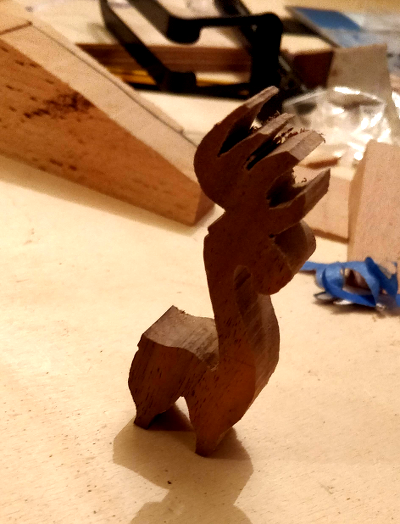Pretty good for a 1st try, but FWIW, I agree, the "hairies" (around the ears for example) show that A) the blade is a bit too coarse, and B) most probably, you could do with a "reverse tooth" blade (that's a blade where the first 3 or 4 teeth appearing up from underneath the saw table face UP, not DOWN, as all the rest of the teeth do. The idea of that is to prevent/reduce those hairies).
You don't say how thick your wood is, but if the OA height of the piece is thumb height as you say, then I'd guess the piece is not much more than 5 or 6 mm thick, right? If so I'd suggest a No 3 or perhaps a No 5 blade as good for that job (the smaller the number of the blade then the finer the cut, so little or no sanding is needed after cutting, BUT the actual cutting will go slower - the higher the number the faster the cut, but the "rougher" it will be).
I've attached here a .pdf of a couple of blade selection charts. One is for Pegas blades (which I think are good, but there ARE other good ones too), the other is a more general-non-specific chart which just talks about TPI basically. FWIW, most of the time, unless cutting thin stock, I'll be using No 5, 7, and sometimes 9 blades.
HTH
View attachment No_Fail_Blade_Chart_206122387.pdf
View attachment Pegas Multi-Scroll Blades.pdf








